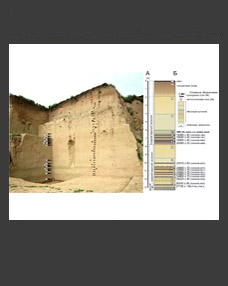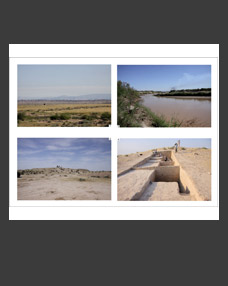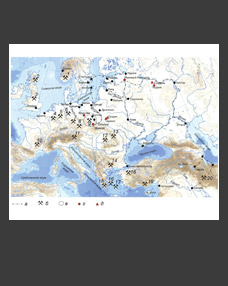Ural Federal University, Yekaterinburg, Russia
E-mail: victor.borzunov@mail.ru
Keywords: the Trans-Urals, Western Siberia, the Neolithic, the Bronze Age, the Early Iron Age, fortified and unfortified circular in plan settlements.
Circular in plan fortified settlements, or ring settlements, were an ideal type of lowland fortifications. One of their prototypes is unfortified settlements with a closed layout of dwellings in a circle and an oval. In the north of Eurasia, ring fortifications emerged in the Neolithic (6th–4th millennia BC), in the fisher-huntergatherers’ communities in the taiga area of the Ob’ River Basin and the mountain-forest Trans-Urals, during the mass settlement of these territories in the context of global warming. In the Bronze Age (late 3rd – early 1st millennium BC), such fortified settlements, as well as promontory and riverside fortified settlements, disappeared in the taiga giving way to large earth-timber fortified dwellings. At the beginning of the Bronze Age, during the next xerotherm, in the steppes of the Trans-Urals, pastoralists who migrated from South-Eastern Europe erected circular fortresses (the Sintashta culture of the 21st–18th centuries BC). Probably, the construction of circular in plan unfortified settlements of the Tashkovo culture in the forests of the Lower Tobol region in the 21st/20th – 16th centuries BC was influenced by the steppe defensive architecture. The earliest taiga fortified settlements were developing independently of the forest-steppe and steppe settlements. The former and the latter alike were economic, industrial, social and, possibly, cult centres of communities. A new mass distribution of ring settlements in the forest-steppe area of the Tobol-Irtysh region, and later in the taiga area of the Surgut and Lower Ob’ River region, took place at the end of the Bronze Age and the beginning of the Iron Age (8th/7th centuries BC – 3rd/4th centuries AD). In the 6th/5th centuries BC – 3rd/4th centuries AD, the defensive systems of some West Siberian fortifications were supplemented with bastion-tower elements borrowed from the Saka people of the Aral Sea region.
DOI: 10.31857/S0869606324010036, EDN: ZWLNOK







